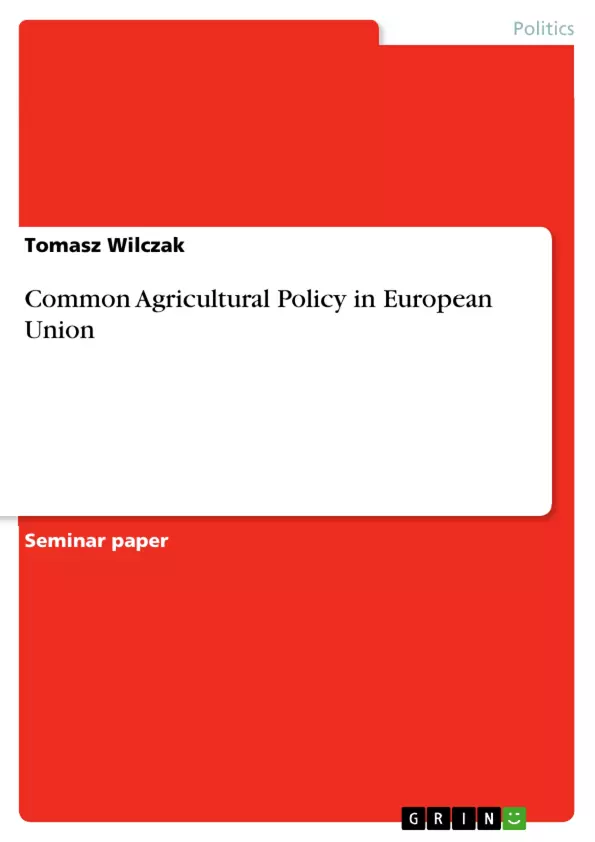Europe is a major exporter and the world’s largest importer of food (mostly from developing countries). The European agriculture sector uses safe and environmentally-friendly production methods to produce the best quality of products. This sector not only provides the food but also guarantees the survival of the countryside as a place to live, work and visit (European Commission, 2011). All this goals are met thanks to coherent agricultural policy within the European Union.
Inhaltsverzeichnis (Table of Contents)
- Common Agricultural Policy
- The Objectives and Goals of the CAP
- Enlargement's Impact on EU Agriculture
- Challenges and Opportunities for Agriculture in the New Member States
Zielsetzung und Themenschwerpunkte (Objectives and Key Themes)
This text explores the Common Agricultural Policy (CAP) of the European Union, highlighting its evolution, objectives, and challenges in the context of EU enlargement. The focus is on the impact of the CAP on the agricultural sector in both old and new member states, analyzing the differences in agricultural prosperity and the implications for rural development.
- The evolution of the CAP and its changing objectives
- The impact of EU enlargement on the agricultural sector
- The importance of the agricultural sector in newly accessed countries
- The challenges of modernizing and restructuring agriculture in the new member states
- The role of the CAP in promoting rural development and prosperity
Zusammenfassung der Kapitel (Chapter Summaries)
- The first chapter introduces the Common Agricultural Policy (CAP), its origins, and its key role in European integration. It emphasizes the importance of the CAP in ensuring food safety, promoting rural development, and protecting the environment. It also notes that the objectives of the CAP have evolved over time to meet the changing needs and expectations of European society.
- The second chapter examines the impact of EU enlargement on the agricultural sector. It highlights the significant increase in farmers and agricultural land that resulted from the accession of new member states in 2004 and 2007. It also discusses the challenges of maintaining adequate policies in light of the changing structure and shares of agricultural production in the EU.
- The third chapter delves into the challenges and opportunities for agriculture in the new member states. It acknowledges the differences in prosperity between the old and new member states and the need for policies that promote rural development in these areas. The chapter emphasizes the importance of addressing issues such as lower income and higher unemployment in rural areas of new member states, while ensuring adherence to EU food safety standards.
Schlüsselwörter (Keywords)
The key terms and concepts explored in this text include the Common Agricultural Policy (CAP), EU enlargement, agricultural sector, rural development, food safety, prosperity, and the differences in economic development between old and new member states.
- Arbeit zitieren
- Tomasz Wilczak (Autor:in), 2011, Common Agricultural Policy in European Union, München, GRIN Verlag, https://www.grin.com/document/180192



